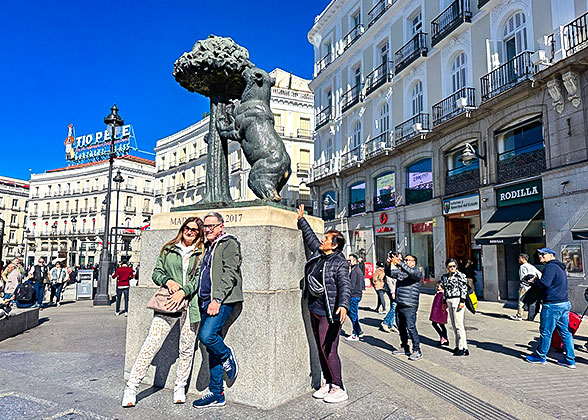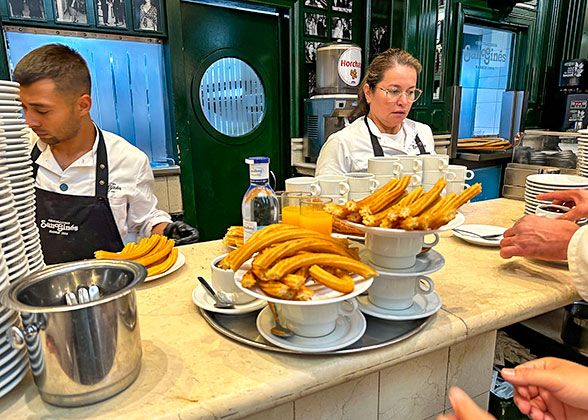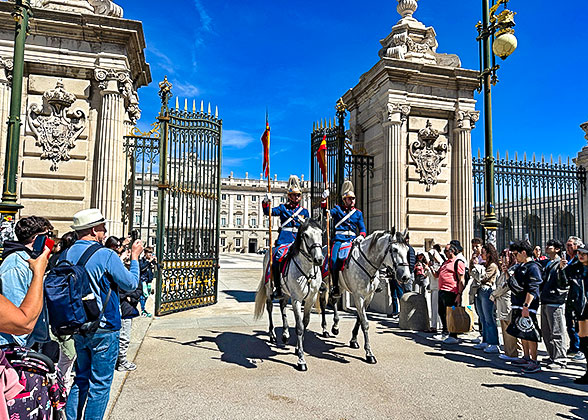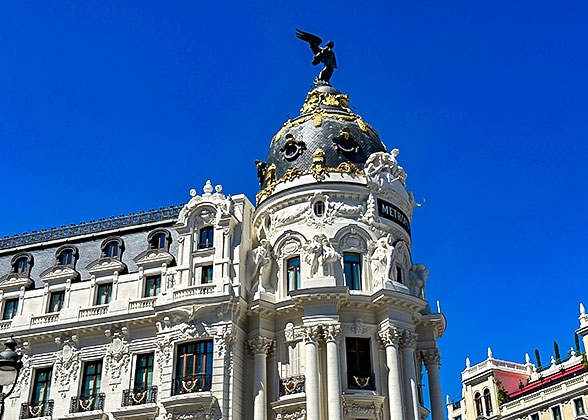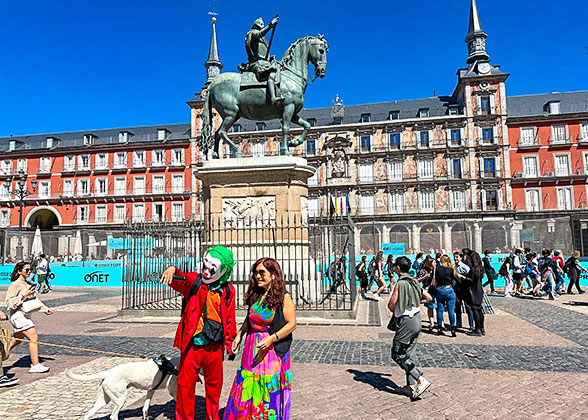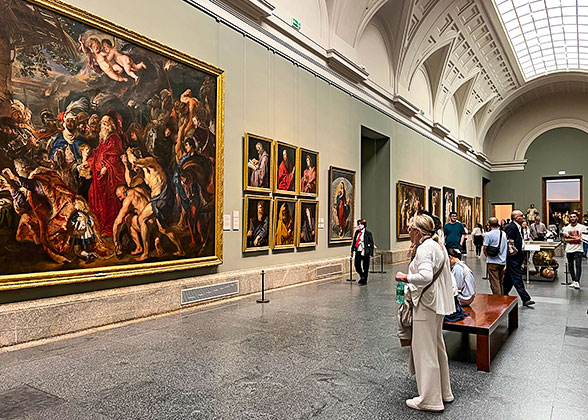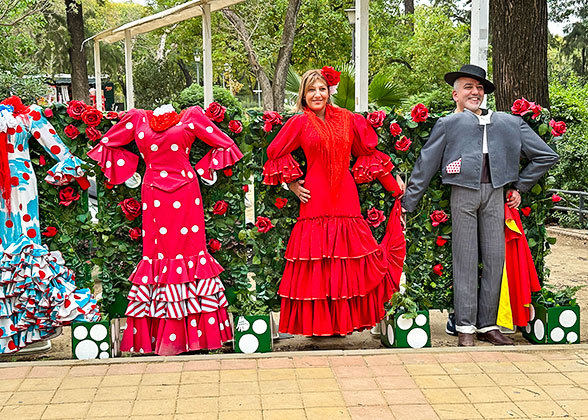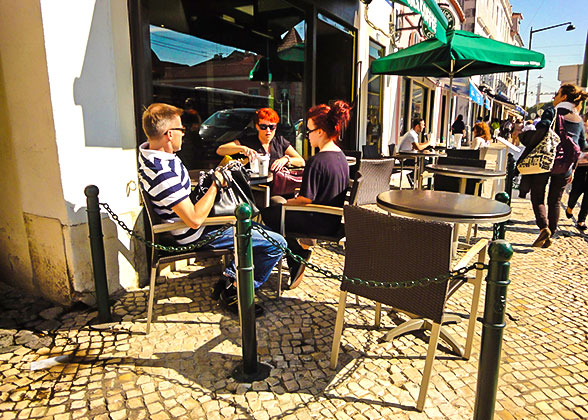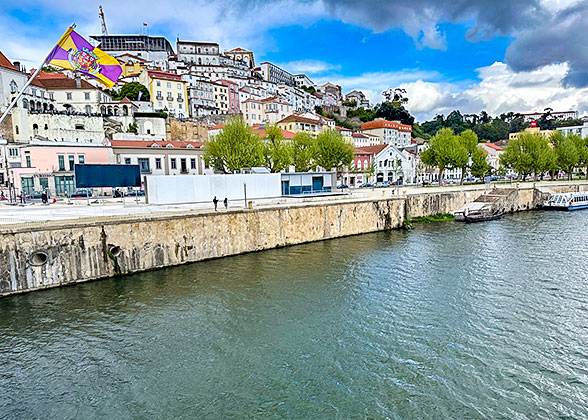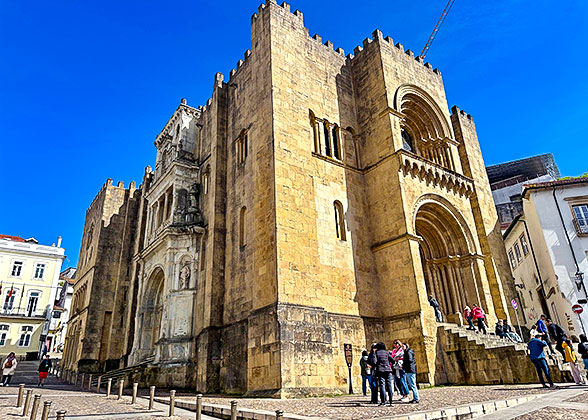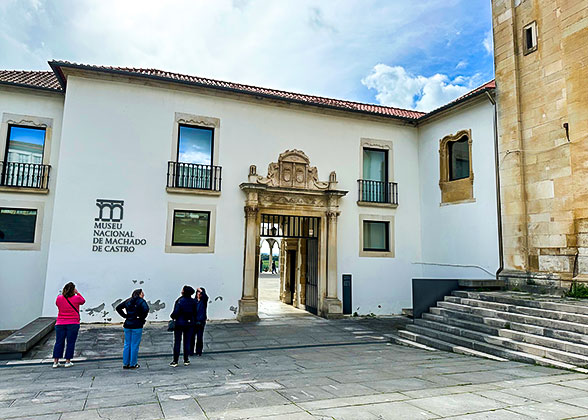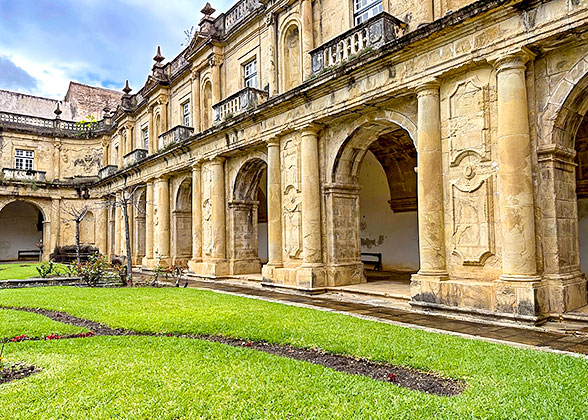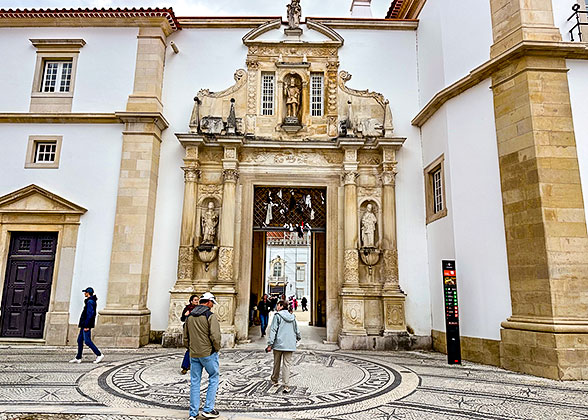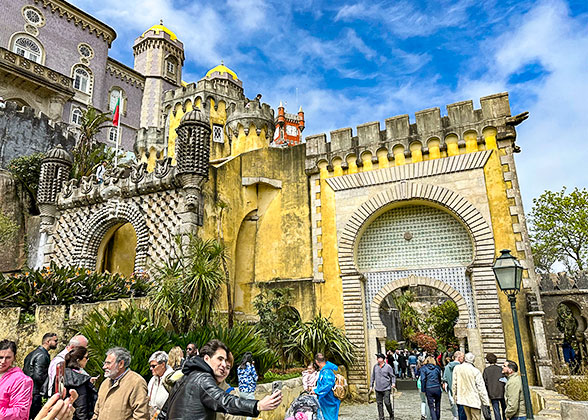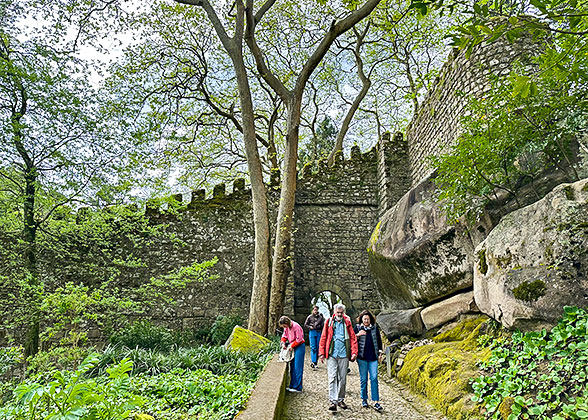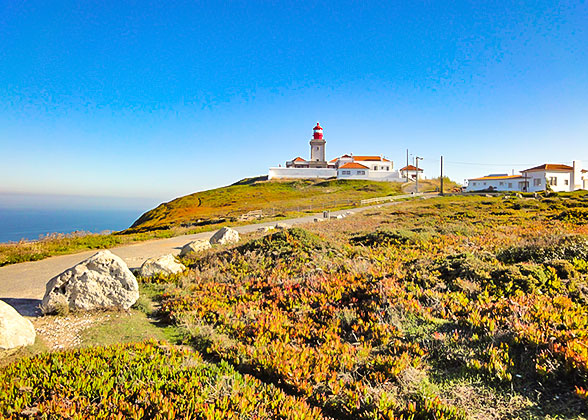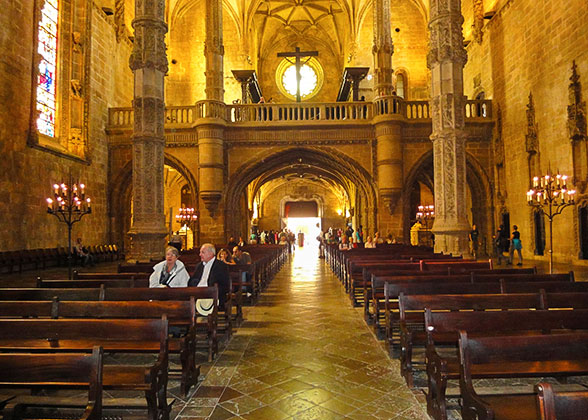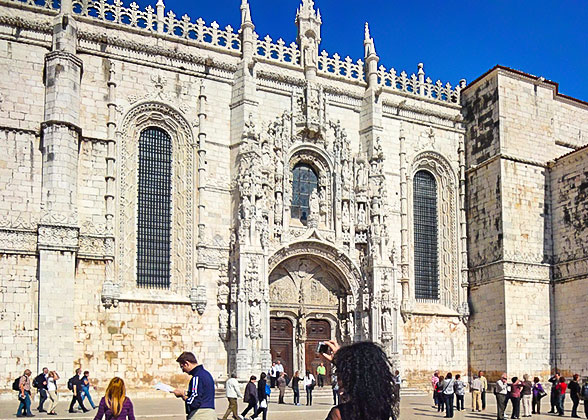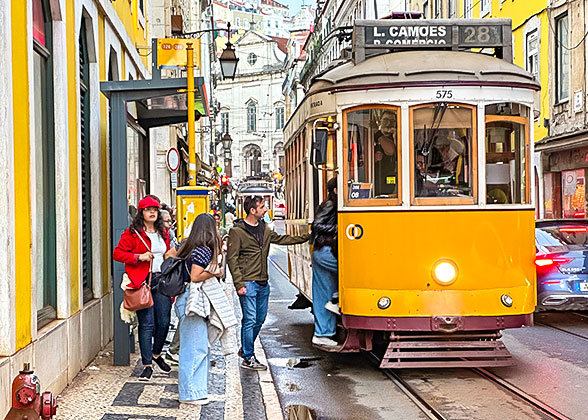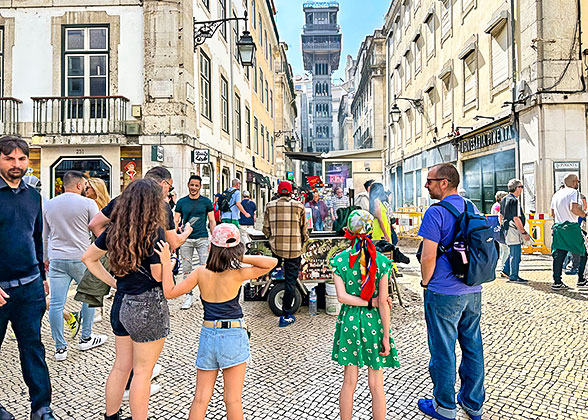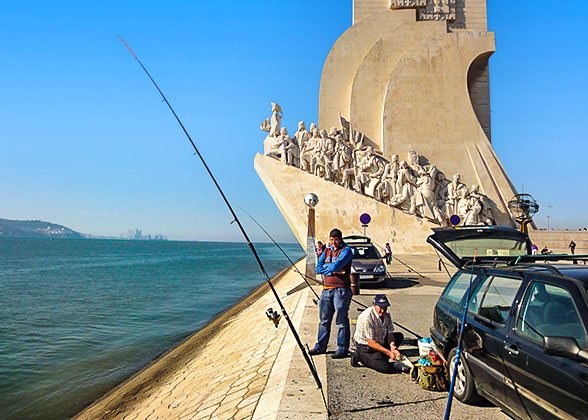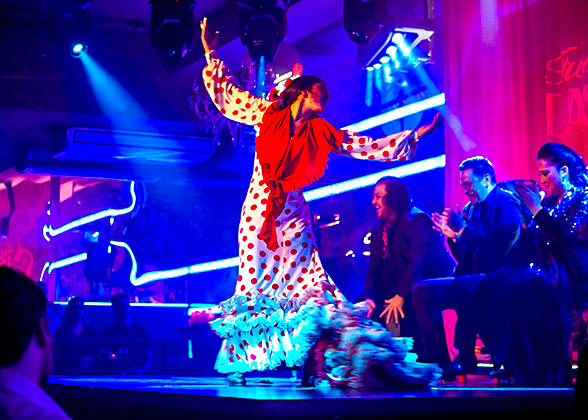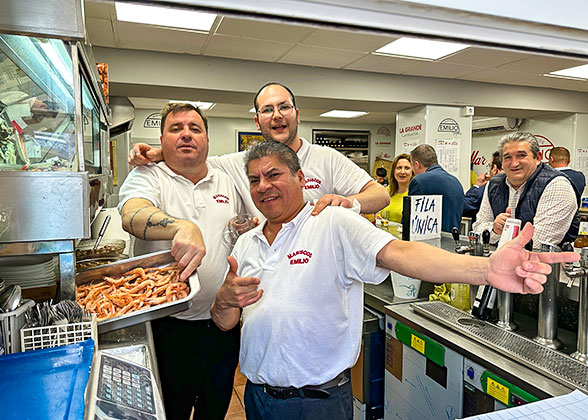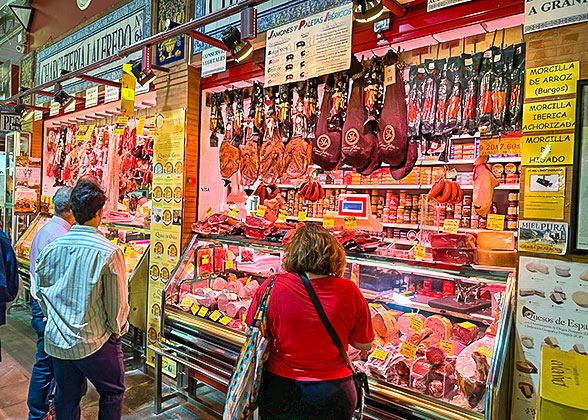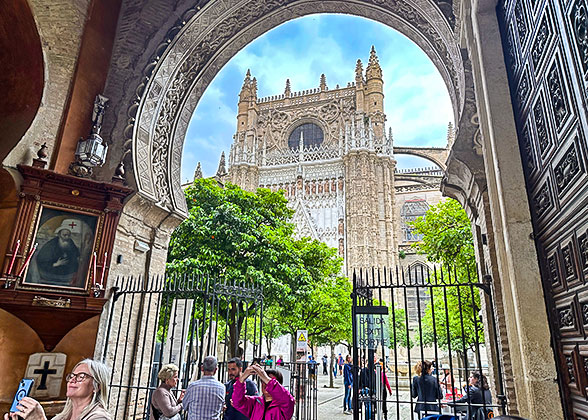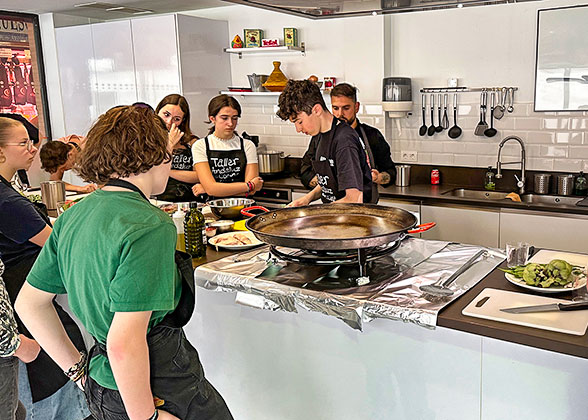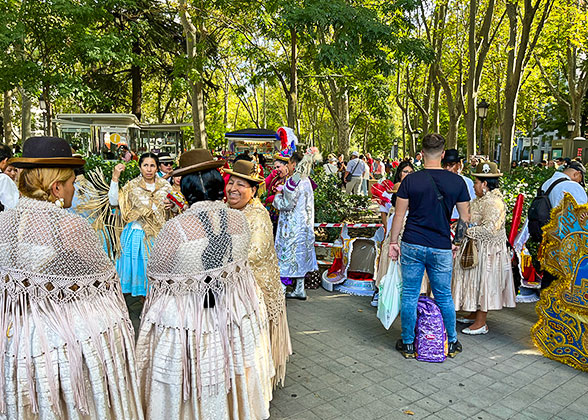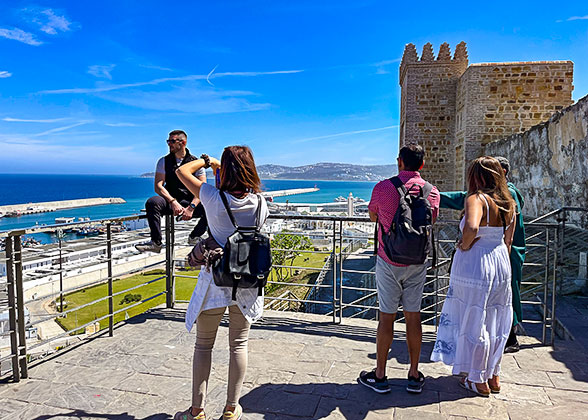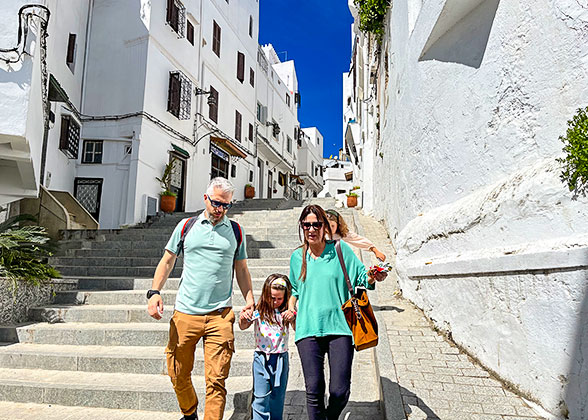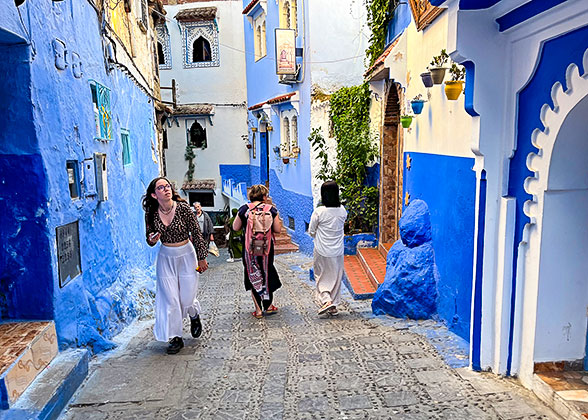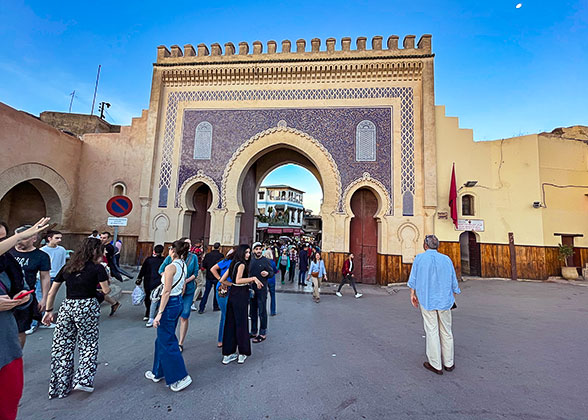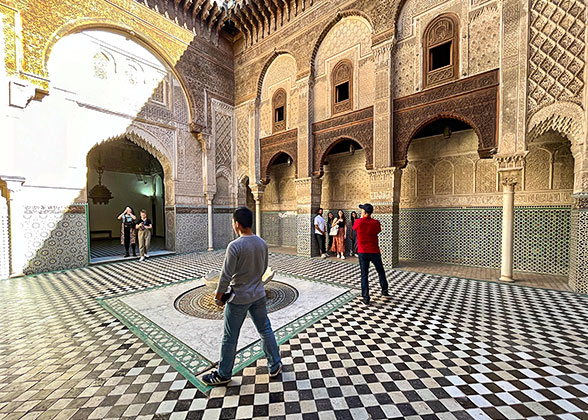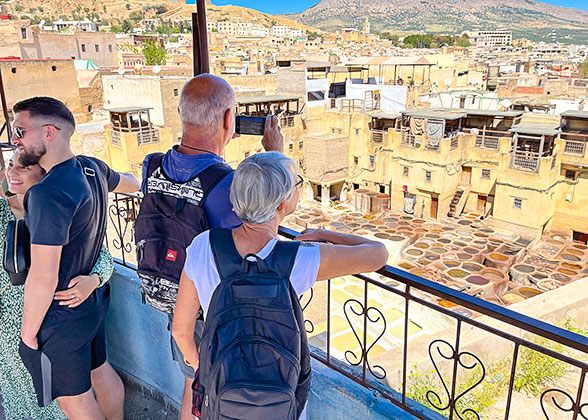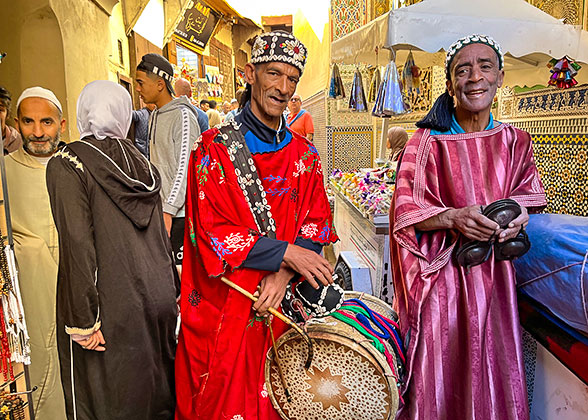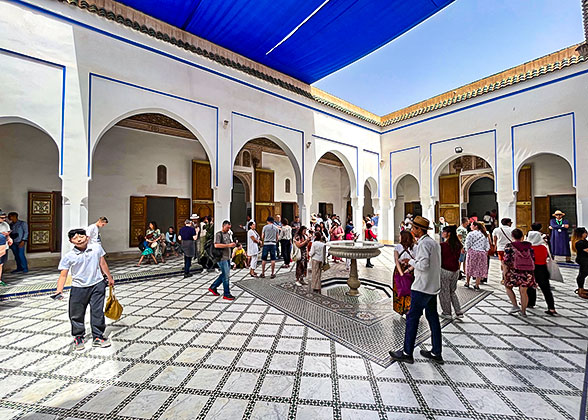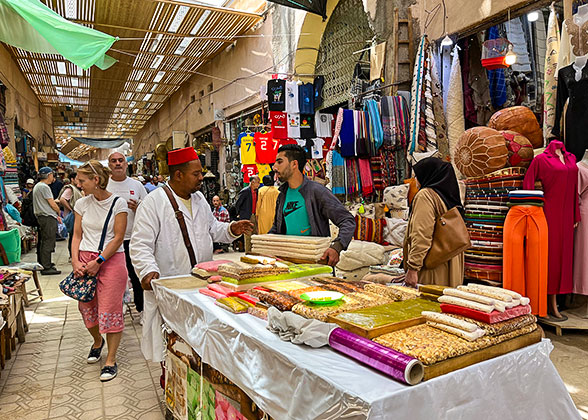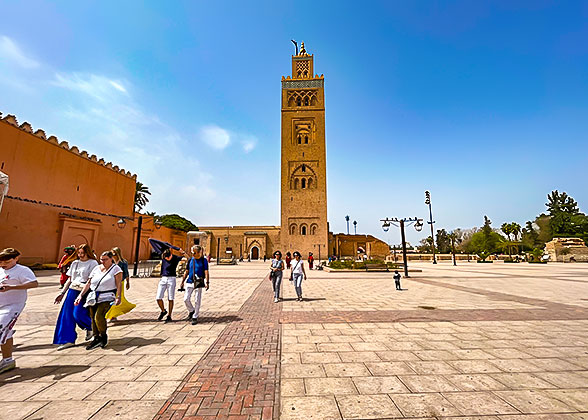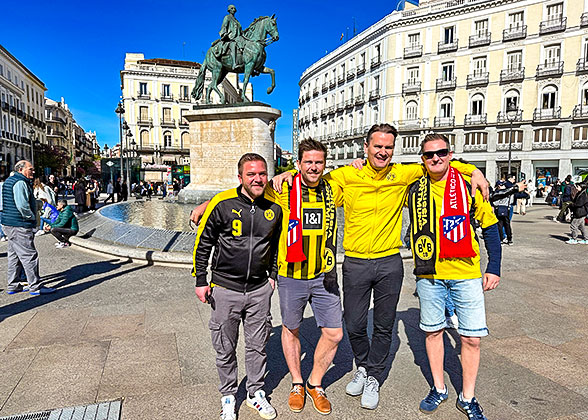Day 1: Madrid Arrival, Welcome to Spain!
Plaza de la Villa, Madrid Your first stop is Spain’s capital city, Madrid. Upon arrival, you need to reach the hotel downtown by yourself. If using public transport, take Airport Express Line 203 from the airport to Cibeles Station. Get off and walk south about 800 meters to the hotel. It takes about 1 hour and costs €5. Uber or Cabify are also available in Madrid, costing about €30 for a single journey to the hotel. After check-in, take a rest at the hotel or try the following activities on your own to get familiar with the city. Activities Recommended:1. Stroll Around the Central City Square, Puerta del Sol Puerta del Sol is surely Madrid’s city center, with several streets radiating outward, boasting prosperous commercial bustling in the surroundings. Strolling here, you will find various souvenir shops, dessert boutiques, ham stores, and some fancy restaurants. Every cobble stone of the streets here tells the history of the old city. On the square, you will also see the city’s symbol, the statue of Bear and the Madroño Tree. 2. Try Spanish Churros at Chocolatería San Ginés Founded in 1894, Chocolatería San Ginés standing near the Puerta del Sol allures locals and tourists with its freshly-made crispy churros. The yummy sticks of crispy dough are always served with a cup of thick hot sweet chocolate, definitely one of the most popular snacks for the locals. The average cost ranges about €2-6 per person and the café opens from 8:00 till midnight. 3. Enjoy a Beautiful Sunset at the Temple of Debod The Temple of Debod was originally an ancient temple with a history of over 2,000 years set in Egypt. Later it was donated to Madrid by the Egyptian government. Every brick and stone of the temple was moved to Madrid and it was finally relocated to Cuartel de la Montaña Park. This is one of the top places to watch stunning sunset views in Madrid. Sitting on the grass, you can see visitors taking photos beside the railing, guitarists singing and people dancing together to welcome the sunset, bringing you a different sunset experience. Accommodation: Mercure Madrid Centro (4 stars) or similar
|
Day 2: Madrid: Royal Palace, Mercado de San Miguel, Plaza Mayor, Prado Museum, El Retiro Park
After breakfast, your private guide will pick you up from the hotel to explore the city highlights on foot or by public transport. The first stop is Plaza de Espana, featuring a large fountain and the statues of Cervantes and his famous characters Don Quixote and the squire Sancho Panza. Then walk to visit the Royal Palace of Madrid, the largest royal palace in Western Europe, composed of 3,418 rooms. However, only a small part of the palace is open to the public now but you can still have a glimpse of the luxurious life of past royal family. Then you will be guided to Catedral de la Almudena, just opposite the palace. The Neo-Gothic church was built in the late 19th century so it looks rather new with colorful ceilings and exquisite modern statues. ► Taste Tapas at Mercado de San Miguel Next, you will be led to Mercado de San Miguel to enjoy tapas you like! As an important part of Spanish food culture, tapas mean small appetizers or snacks before a meal. Tapas have a wide range and could include practically anything from cold plates like cheeses and olives, to hot snacks like fried squid rings. Today, the tapas are not only a part of a meal but various tapas can even be combined into a complete meal. Mercado de San Miguel is such a place where you can taste a series of tapas and other Spanish specialties like ham, seafood, paella, beer and desserts. If you feel it too touristy, we can arrange Mercado Anton Martin for you. After lunch, we will stop by the Plaza Mayor and head to Prado Museum to soak in the art world of Velasquez, Goya and El Greco. Later, you can roam around El Retiro Park, the most famous park in Madrid, which also served as the royal park in the 17th century. Get out of the north-eastern entrance of the park, you will stop by the majestic triumphal gate Alcalá Gate. Today’s last stop would be Santiago Bernabeu Stadium to explore the behind-the-scene story of the world-famous football club, Real Madrid. After the visit, you will be escorted back to the hotel. Night Activities Recommended:1. Watch a Thrilling Football Match in Madrid One of the best things to do in Madrid at night is to enjoy a live football match in the top-notch Santiago Bernabéu Stadium. Watching Real Madrid play a football game is a treat even though you are not a fan. Feel the passionate atmosphere with all the audience and cheer for every goal. It is better to book a ticket in advance for a good seat. 2. Enjoy a Fantastic Flamenco Show Some old bars and restaurants in Madrid offer classic performances with drinks or dinners. Torres Bermejas is one of them, founded in 1960, featuring a decorative style of the Alhambra, where you can enjoy an impressive flamenco show performed by 3 actresses, 1 singer, and 1 guitarist. Generally, a show lasts about 1 hour and costs from 28-85€ according to different timings and options. Meals: Breakfast Accommodation: Mercure Madrid Centro (4 stars) or similar
|
Day 3: Transfer from Madrid to Salamanca by Train
After breakfast, you will take an early morning train from Madrid to Salamanca on your own and the train ticket is ready for you. Take Rail Line C3 from Sol Station to Madrid Chamartin Train Station for a 3-hour train journey. After arrival, the hotel booked for you is only about 2 km away from the train station. Take Bus Line 1 from Pº. Estación 119 C/ to Gran Vía 72 and walk southwest about 300 meters to the hotel. After check-in, explore the ancient monumental city by yourself. Situated in the northwest of Spain, Salamanca has beautiful sandstone buildings which shine a bright yellow color under the light and thus it also boasts as the Golden City of Spain. The historical city is home to the oldest university in Spain, the University of Salamanca. So here you can not only take in the charm of the city’s Renaissance-style or Gothic-style architecture, but also get cultured at the 800-year-old university with vitality. ► Suggested Sightseeing Route: The classic walking itinerary starts with exceptional Plaza Mayor → Casa de las Conchas (Shell House) → Lglesia de la Clerecia (Clerecia Church) → Catedral Nueva (New Cathedral) → Catedral Vieja (Old Cathedral) → Universidad de Salamanca (University of Salamanca) → Puente Enrique Esteban (Enrique Esteban Bridge) ► Tip: Salamanca has two cathedrals connecting, which is very rare in cities. The entrance of the old cathedral is just located in the new cathedral. What’s more, from the base of the Old Cathedral, you can climb to the top of the two churches, where you can see and almost touch the 110-meter-high (361-foot) tower, and enjoy a breathtaking panoramic view of the city. Special Experience: Spot the Lucky Frog at Salamanca University!In Salamanca, frogs always represent good luck. A legendary story has that once upon a time a craftsman secretly carved a frog into a skull while building the University of Salamanca and made a spell on it, "Students who can spot it will pass their exams." Since then, the legend spread widely and everyone is looking forward to finding the frog, whether students or tourists. The Salamanca frog was carved on the facade of the university, hiding in complex intricate carvings. So spotting it may not be easy and just try your luck! Meal: Breakfast Accommodation: NH Collection Palacio Castella, Salamanca (4 stars) or similar
|
Day 4: Transfer from Salamanca to Coimbra, Portugal by Bus
This day you will wave goodbye to the beautiful university town Salamanca and take an early morning cross-border bus by yourself to Coimbra. We will book the bus ticket for you in advance and then you need to go to the bus station on your own. It is only about 1.5 km, easy to access by taxi or Bus Line 5 from Pº. Rector Esperabé s/n to Filiberto Villalobos, 76. The bus journey lasts about 5 hours. Upon arrival, walk south about 300 meters to get to the hotel we have booked for you. The afternoon is free for you to explore Portugal’s fourth-largest city, Coimbra. Coimbra is also a famous university city in the world, home to the first university of Portugal, the University of Coimbra, which was founded in 1290. The city once served as the old capital city of the country during the 12th-13th century, retaining a lot of fine medieval architecture. Apart from that, Portugal’s largest Roman ruins can also be found in Coimbra. Aimless ambling through the cobbled narrow streets to feel the lively local life and spot beautiful architecture is a great idea. Here we also recommend a leisurely city walking route for you to explore the beautiful old town: Igreja de Santa Cruz (the Church of Santa Cruz) → Sé Velha de Coimbra (Old Cathedral of Coimbra) → Museu Nacional Machado de Castro (an art museum) → Sé Nova de Coimbra (New Cathedral) Meal: Breakfast Accommodation: NH Coimbra Dona Ines (4 stars) or similar
|
Day 5: Transfer from Coimbra to Lisbon by Train
This morning will also be free for you to spend time in Coimbra. It is suggested to explore Portugal’s oldest university by yourself to take in the impressive campus with historical buildings. Among them, the Joanina Library is the highlight, collecting over 250,000 books, with beautiful frescoes, intricate carvings, and rolling ladders. The famous Baroque-style library is also known as the inspiration for the Harry Potter series and you may find the similarity between it and the Library of Hogwarts. In addition to the historical library, the Harry Potter school uniforms were also inspired by the long elegant black cape uniforms of the university. If happen to visit during the graduation day, you will luckily see the students in their gowns striding around the campus. The Church of Santa Cruz, Coimbra Coimbra University, One of the Oldest Universities in the World
At noon, you need to go to Coimbra-B Railway Station on your own for a 2-hour train journey to Lisbon. From the hotel to the train station, it’s about 1.2 km. Walk south about 350 meters to take Bus Line 25T from Fernão de Magalhães (rodoviária) to Estação Coimbra B. After arrival, take the Vm metro from Oriente to Saldanha and then transfer to Am metro to Marquês de Pombal station. After that, walk southeast about 300 meters to the hotel for check-in. Lisbon Activities Recommended:You can randomly spend the rest time wandering around the city. If you are interested in marine life, it is recommended to visit Oceanário de Lisboa (Lisbon Oceanarium), near the Oriente Train Station. It is one of the top aquariums in the world. Here you can see rare Giant Sunfish, hardly seen in other oceanariums. Meal: Breakfast Accommodation: Hotel Marques de Pombal, Lisbon (4 stars) or similar
|
Day 6: Sintra Visit: Pena Palace, Castle of the Moors, Quinta da Regaleira, Cape Roca, Cascais
Today, we will head to the outskirts of Lisbon, Sintra, to have a castle & palace day tour. Sintra Old Town used to be the summer vacation destination for Moorish notabilities and Portugal’s royal family, atop the high hill range. Your guide will lead you first to Pena Palace, featuring a mixture of Gothic, Renaissance, Moorish, and Manueline styles in all. The bright red-yellow castle allures every visitor for its beautiful appearance, extraordinary vision, and fairytale-like fantasy. The next stop is Castelo dos Mouros (Castle of the Moors), though dilapidated, surrounded by ancient walls and watch towers. Next, we will continue to Quinta da Regaleira, which is also known as the Palace of the Monteiro Millionaire, boasting Romanesque-inspired white buildings, with lush gardens, towers, and caves. ★ Enjoy Sunset at Westernmost Point of Eurasia - Cape RocaFinally, we will go to Europe’s most westerly point, Cape Roca, to feel the sea breeze from the Atlantic and take in the coastal charm of Cascais fishing village. With steep cliffs and howling sea breezes, a lighthouse and a large cross facing the ocean stand at Cape Roca with the description of "Where the land ends and the sea begins." Here is not only a popular photo stop but also an ideal place for a mesmerizing sunset watching. Find a high location and wait for at least 30 minutes before the sunset. Looking at the sun slowly and softly sink into the ocean, you will be amazed at its beauty and romance. ► Tips: 1. If you want to photo with the monument with fewer crowds, just do it after the sunset and the light is better at that time. 2. Remember to take a coat as it is so windy on the cliff. 3. Wear sneakers and be ready for some coastal mountainous trails. Finish the visit, and then you will be escorted back to your hotel in Lisbon. Meal: Breakfast Accommodation: Hotel Marques de Pombal, Lisbon (4 stars) or similar Roca Cape Hell's Mouth, Cascais
|
Day 7: Lisbon Exploration: Belém Tower, Monument of the Discoveries, Jerónimos Monastery, Alfama
After breakfast, you will be accompanied to view the Belém Tower from outside. The fortification built in the 16th century is a symbol of the Lisbon City that had witnessed the Age of Discovery. Next, we will head to the 52-meter-high (171-foot) Monument of the Discoveries (Padrao dos Descobrimentos), facing the sea, depicting over 30 historical explorers including Henry the Navigator and King Alfonso V. Later, we will visit Jerónimos Monastery (Mosteiro dos Jerónimos), the famous UNESCO-listed monastery, also the place where Vasco da Gama was buried. In the fine example of the Manueline architecture, you can see towering tree-trunk-like columns and beautiful arches with delicate carvings. Finish the visit, if time permits, and your guide will lead you to try the world’s first Pasteis de nata at Pstéis de Belém. Later, continue to move to the National Coach Museum, collecting luxurious and gorgeous horse-drawn carriages, coaches, and berlines, most of which are from the 17th, 18th and 19th centuries. At noon, we will reach Lisbon’s most popular food market, Time Out Market, featuring a wide range of tasty local snacks, fresh seafood, wines, and drinks. You can surely experience the lively atmosphere and culinary culture under one roof. After lunch, the guide will accompany you to Bica Funicular. It is interesting to try the old-fashioned yellow tram up the hill. However, if the queue is too long for it, you can choose to walk along the trail. The next stop is the Church of Sao Roque (Igreja de São Roque), a small church with an extremely ornamented interior with gorgeous Baroque artistry, though it looks plain outside. Then you will walk by Elevador de Santa Justa to see the giant elevator in a Gothic Tower, and stop by the spectacular Arco da Rua Augusta, which was built in memory of the earthquake in 1755. Walking through the iconic architecture, come to Praça do Comércio, a magnificent city square surrounded by bright yellow-colored buildings. After that, we will dive deep into Portugal’s most traditional and historical neighborhood, the Alfama District, with narrow cobbled lanes and crowded old medieval buildings. First, visit Lisbon Cathedral, the oldest church witnessing a long history dating back to the 12th century. The historical exterior of Romanesque style and colorful stained glass windows are attractive enough. After that, you will be guided to Miradouro de Santa Luzia, one of the most popular viewpoints of the city, offering stunning panoramic city views. Today’s last stop is the Castelo de S. Jorge constructed in the 11th century, the highest location of the Alfama, also the best place to enjoy a sunset, overlooking Lisbon and the Tagus River. ► Tips: 1. Wear a pair of comfortable shoes as the old town area has stony cobbled streets. 2. Prepare a coat to protect from strong wind when enjoying sunset at the viewing platform. ★ Catch the Best Photos of a Vintage Lisbon TramVisiting the Alfama, you cannot miss catching a beautiful photo of the old tram, especially on a sunny day. Your professional guide will also recommend some best locations to take great photos. Some are as follows: 1. Lisbon Cathedral: With the most famous Tram Line 28 and Red Tram passing by, this is one of the best locations to catch a tram photo. Sometimes you can also capture a shot of two trams crossing each other. 2. R. de São Julião: This is the street behind Arco da Rua Augusta, the must-pass way of Tram Line 28, with good light and beautiful red-roof houses in the background. Meal: Breakfast Accommodation: Hotel Marques de Pombal, Lisbon (4 stars) or similar
|
Day 8: Transfer from Lisbon to Faro by Train
Monument to the Discoveries, Lisbon This morning, you will take a train on your own from Lisbon to Faro in the Algarve region. Like the way you came, Metro Am and Vm can take you from the hotel to the Oriente Railway Station. After about 3 hours of train journey, you will arrive at Faro Railway Station, where you can walk southeast about 400 meters to the hotel. The afternoon is free for you. As the southernmost city in Portugal, Faro is the capital city of Algarve. The small city features lovely beaches and heaps of historical buildings with a cozy atmosphere. In the afternoon, you can hang out in the old town area through the Arco da Vila, and stop by the Faro Cathedral (Santa Maria Cathedral) and the famous Chapel of Bones (Capela dos Ossos), which features ancient walls composed of skulls and bones, providing a thrilling experience. Later, you can enjoy leisure time on the beautiful beach, Praia de Faro, with plenty of bars and cafes nearby. In the evening, there will be a live band singing on the beach and people dancing around the stage, which is very atmospheric. If you are looking for a lesser-known spot for a beach vacation, it is optional to take a train for 10 minutes to Olhão Town, which also boasts high-quality white sandy beaches. Meal: Breakfast Accommodation: AP Eva Senses, Faro (4 stars) or similar
|
Day 9: Faro to Seville by Bus
Plaza de Espana (Spain Square of Seville) This morning, you will take a 3-hour bus from Faro to Seville by yourself (tickets reserved and included). The Faro Bus Station is just near your hotel, within 5-minute walk distance. After arrival in Seville, take the Bus EA Line from Prado San Sebastián (Carlos V) to Torneo (Estacion Plz. Armas). Get off the bus and walk southeast about 50 meters to the hotel. We have booked a comfortable hotel for you near Spain’s most beautiful city square, Plaza de España. After check-in, have a rest at the hotel or explore the beautiful city on your own. Activities Recommended:1. Watch a Fantastic Flamenco at Plaza de España or an Old Bar Seville is known as the birthplace of Spain’s most famous art, Flamenco. So enjoying a flamenco show in the passionate city is a must. Beautiful Plaza de España is a good option to take in authentic and original dances though the music and clothes are quite simple, and you can definitely be impressed by the dancers’ passion. You can also choose one of the old bars or theaters to soak in the lively atmosphere at night, which generally costs 25-30 euros for a brilliant show, rather cheaper than that of Madrid. 2. Visit the World’s Largest Wooden Structure - Metropol Parasol! Metropol Parasol is an iconic building in Seville, boasting its modern and futuristic honeycomb design. Composed of 4 floors, it has the first floor as a central market and the top floor offers a stunning city view at the cost of 15 euros. What’s more, when it’s getting dark, the light show starting at 20:00 will dazzle you. 3. Stroll Around the Flea Market at Mercado de Triana As the most famous local market in Seville, Mercado de Triana offers a lot of fresh food, snacks and fruits. Here is also a good place to experience the local vibe. What’s more, if you happen to visit on Thursday, you will meet one of the oldest street markets in the city, displaying all kinds of antique things like books, clothes, furniture, shoes, jewelry and toys. Spending your afternoon here to find something special is interesting and relaxing. Dining Recommendation: Try Local Cuisines at Cerveceria La GrandeThis is a famous restaurant located in the Mercado de Triana, a popular destination for locals to enjoy delicious food. Want to try authentic Seville cuisines, taste fresh seafood and grab a glass of cold beer? Just come here and enjoy them like a local with a pleasant atmosphere. Meal: Breakfast Accommodation: Melia Sevilla (4 stars) or similar
|
Day 10: Seville Highlights: Seville Cathedral & La Giralda, Real Alcázar Palace, Torre de Oro, Cooking Class
This morning your guide will first lead you to visit the city’s two biggest cathedrals: Iglesia Colegial del Divino Salvador and Seville Cathedral. The first one is the Baroque-style church built in the 17th century, featuring delicate wood carvings and exquisite ornamentation. Seville Cathedral has the largest scale and its Gothic-style architecture is amazing. Apart from marveling at the 15th-century building, you can climb the magnificent bell tower of La Giralda to see far away and view the remains of Christopher Columbus, held by four statues of 4 kings of Spain. Next, you will take a short break at Seville’s old town area, Santa Cruz. After lunch, we will head to Real Alcázar Palace, one of the oldest royal palaces in Europe. The fabulous palace features a blending style of Moorish and Spanish Christian, which is very beautiful and charming. Later, you will be accompanied to Torre de Oro, “the Tower of Gold”, originally served as a military watch tower and a witness to the maritime history of Seville. After that, you will have a visit to Plaza de toros de Sevilla, one of the most important bullrings in Spain. Following the guide, here you will learn about the culture, equipment, and specific process of bullfighting, and closely be impressed by the bullfighting spirit. ★ Special Arrangement: Learn to Cook Traditional Spanish Dishes!After that, we will walk across the bridge, Puente de Isabel, and reach the Mercado de Triana for a traditional cooking class starting at 18:00. The chef will teach 3 dishes in total, including the Spanish cold soup gazpacho or salmorejo, a typical tapa and the specialty paella. Step by step, and you will enjoy the cooking and finally taste your own food for dinner along with soft drinks. Of course, you will also acquire a written recipe and some cooking tips when the class ends. Finally, you need to go back to the hotel on your own by Metro L1 or taxi. ► Fun Fact: The Secret of NO8DO in Seville You may notice the NO8DO sign in the city of Seville, on streets, walls, roads, flags and various buildings. So what’s the meaning? It’s about a story of rebellion and loyalty. About 800 years ago, a Spanish King was betrayed and only Seville firmly supported him and they finally won the victory. The 8 is not the number but represents the skein of a yarn. In Spanish, NO + the skein of yarn (madeja) + DO just sounds like “No me ha dejado”, meaning Seville hasn’t abandoned me. To show his gratitude to the Seville people, the king wrote these words at the end of important documents and letters. Until today, the sign keeps being the official motto of the town hall of Seville and it can be seen everywhere. Meal: Breakfast, Dinner Accommodation: Melia Sevilla (4 stars) or similar
|
Day 11: Seville - Tarifa by Bus, Tarifa - Tangier by Ferry
Waving goodbye to Spain, and you will depart for Morocco today. After breakfast, walk 10 minutes northwest from your hotel to Estación de autobuses Prado de San Sebastián to take an early bus to Tarifa on your own (3 hours, tickets reserved and included). Take a short break here and then board a ferry with the tickets we booked for you to Tangier, which generally takes about 1 hour. After arrival in Tangier, your hotel is about 1 km away from the port, and easy to access by taxi. Today’s rest time will be free for you to relax at the hotel or go sightseeing in the old town. Situated on the Strait of Gibraltar, Tangier sets on the coasts of the Atlantic and Mediterranean Sea, offering a beautiful sea view and brilliant multiple cultures. Apart from enjoying sunbathing at white sandy beaches, and strolling around the old town Medina to visit museums like the Koranic Museum and the Museum of Moroccan Arts, you cannot miss tasting supreme food here, boasting traditional Moroccan cuisines and Spanish dishes. Dining Recommendation: Eat like a Local in Dar HarruchThis is a typical Moroccan restaurant offering affordable traditional local dishes like Moroccan salad, harira, tajine, and beef cous cous. Luckily, it not only satisfies carnivores’ appetites but is also friendly to vegetarians. With beautiful decors of a traditional Moroccan style, it is really a treat to enjoy a meal with good service. By the way, credit cards are acceptable here. ► Please Note: You have entered the land of Morocco today and the time is 1 hour later than that of Spain. Meal: Breakfast Accommodation: Riad Mokhtar, Tangier (4 stars) or similar
|
Day 12: Tangier to Chefchaouen by Private Car, Stop by Tetouan
★ From today, your Morocco tour starts and we will upgrade the service to have a private car with driver for you! After breakfast, we will drive to Morocco’s Blue City, Chefchaouen. After about a 1.5-hour journey, we will stop by Tetouan, where you can take a break. Boasting the White Dove in the Mediterranean Sea, Tetouan is a beautiful white city featuring Spanish colonial buildings and Arabic-style architecture. The whole city lies on a rocky plateau, offering a gentle and relaxing pace, especially when you wander in the old Medina to soak in the local culture. After a short visit, we will continue to drive 1.5 hours to Chefchaouen. Upon arrival, check in at the hotel and then your private guide will lead you to explore the Blue City in the afternoon. Chefchaouen Medina was first built in 1471, located high in the Rif Mountains as a fortress. Taking a stroll around the city bathed in blue is undoubtedly a treat, and the guided walking tour lasts about 2-3 hours following the route below: Bab EL Ain → Callejon El Asri → Place Outa el Hammam & Kasbah → Kasbah Museum → Grand Mosque → Ras El Maa Waterfall → Spanish Mosque (panoramic views & sunset) ► Visit Tips: 1. Do you know why the whole city of Chefchaouen is painted in blue? And one of the main reasons is said to be mosquito repelling. So remember to prepare some mosquito repellent spray. 2. Photo advice: As the background is all in blue, it is suggested to wear highly saturated clothing like white, red, or orange. Meals: Breakfast Accommodation: Dar Echchaouen Maison & Riad, Chefchaouen (4 stars) or similar
|
Day 13: Drive to Fez, City Exploration of Fez
Today we will leave for Morocco’s second largest city, Fez, on a private car ride, which takes nearly 4 hours. After arrival, check in and have a rest at the hotel to get ready for the afternoon trip. After lunch, you will be accompanied to visit some city highlights of Fez. The first stop is Jnan Sbil Garden. Built in the 18th century, the lush garden offers fresh air and green space for you to decompress from the long journey. Here you can also enjoy various tropical plants and fountains with typical Morocco style. Then we will head to Aben Danan Synagogue, a historical Jewish church at an old alley. It’s interesting to stop here to have a glimpse of Fez’s Jewish history. Afterward, you will be guided to see the Royal Palace in Fez from outside. It is a pity that visitors are not allowed to enter the gorgeous palace, but viewing outside is still stunning enough to appreciate its grandeur. The palace was constructed in the 13th century with intricate designs. Be amazed at the impressive gilded bronze gate with exquisite craftsmanship and you will surely get great photo shots taking it as the background. The next stop is Borj Nord, first built in the 16th century as a citadel to defend the city. Now it has become a museum of arms, collecting the weapons from historical periods to the 20th century. Apart from enjoying weapons and armaments, this is also a good place to overlook the city. Today’s last stop is the Marinid Tombs near the museum. Though tomb remains are few, it offers a different angle for the city’s panoramic view.
Meals: Breakfast
Accommodation: Riad Marjana Suites & Spa (4 stars) or similar
|
Day 14: Fez Old Medina: Al Attarine Madrasa, Kairaouine Mosque & University, Chouara Tannery
After breakfast, your guide will meet you at the hotel and lead you to spend one day exploring Fez’s old Medina. Nearly all the cities in Morocco have their own medina, but Fez has the oldest and best-preserved one with over 120,000 houses, more than 3,500 workshops, and 9,600 narrow alleys. A large amount of locals inhabited in the maze-like old medina, where you may feel like being stuck in time. Entering from Bab Boujloud, the main blue gate of the old quarter with iconic blue mosaic patterns, you will be guided to see the lively commercial streets lined with busy shops and stalls. Following the guide, you will first go to the Dar Batha Museum, collecting some Arabic artifacts and garments with a lovely garden. Then move to Bou Inania Madrasa, a gorgeous Islamic school built in the 14th century, with intricately designed tiles. After that, stop by the historical Glaoui Palace and Chrabliyine Mosque to take in ancient Islamic architecture, beautiful drawings and exquisite fresco. Finish the visit, and you will be accompanied to Nejjarine Fountain, featuring colorful mosaic tilework, the nearby Museo Nejjarine, displaying a lot of crafted woodwork and old household utensils, which will also help you to understand the way of locals’ life. The Mausoleum of Moulay Idriss II would be your next stop and it is the most important pilgrimage site in Morocco, the tomb of the founder of Fez. Finish visiting the iconic Islamic school Al Attarine Madrasa, and then you will drop by Fez’s Kairaouine Mosque & University built in 857, the spiritual heart of the city, also one of the oldest universities in the world. Next, you will pay a visit to Fez’s largest tannery, Chouara Tannery, where you can see an interesting medieval process of tanning. It is stunning to see how leather goods are dyed in huge open tanks. At the end of the day, you will glimpse the Andalusian Mosque from the outside. ► Tips: 1. It is a pity that most mosques including Kairaouine Mosque & University are not allowed to enter for non-Muslims so you can only view the outer appearances and have a peek into the interiors. However, your professional private guide will suggest some good locations to better enjoy the views. 2. Chouara Tannery follows the ancient dyeing process, during which the hides are soaked in a large colorful vat with traditional material like cow urine, quicklime, water, and salt. And thus it smells terrible. We will offer you a sprig of mint to alleviate it.
Meals: Breakfast
Accommodation: Riad Marjana Suites & Spa, Fez (4 stars) or similar
|
Day 15: Drive from Fez to Marrakech, Stop at Beni Mellal & Ouzoud Waterfalls
After breakfast, we will depart to Marrakech, Morocco’s 4th largest city. By a comfortable private drive, we will spend about 9 hours on the way, while reasonable stops will help you to ease the fatigue. After about a 4-5 hour drive, we will get to Beni Mellal, where you will enjoy a leisurely stroll at the beautiful park Ain Asserdoun. Afterward, drive about 2 hours to Ouzoud Waterfalls, which stand at a height of 110 m (330 ft), boasting the most spectacular waterfalls in North Africa regardless of the local dry and rainless climate. Enjoy 1-hour hiking here to feel nature. Apart from enjoying cool water, if lucky, you may also spot some cute monkeys near the waterfalls. If happen to visit during late March and early April, you will be entertained by cherry blossoms all over the mountain. Later, continue to drive about 2.5-3 hours to arrive in Marrakech. Meals: Breakfast Accommodation: Riad Nesma Suites & Spa, Marrakech (4 stars) or similar
|
Day 16: Marrakech Highlights: Old Medina and Jemaa el-Fna Night Market
This morning, your guide will first accompany you to visit the old Medina of Marrakech. Founded in 1070, the old settlement features a maze of narrow streets and red Arabic houses. Now it is designated a UNESCO World Heritage Site. Feel the local vibe by wandering through the cobble streets lined with various shops and stalls and taste some authentic snacks. We will then visit Bahia Palace built in the 19th century. As the masterpiece of Morocco architecture, it served as the palace of Si Musa and was named after his wife, offering you a glimpse of the life of a Morocco’s noble family with colorful tiles, delicate columns, gorgeous woodwork and fancy fountains. Afterward, we will head to the Jewish Quarter (Mellah). Compared to the crowded Medina, this is a hidden gem, where locals purchase high quality spices at unbeatable prices. After that, stop by Marrakech’s oldest synagogue, Slat al-Azama Synagogue, which also houses a small museum showing the history of local Jewish people. Badi Palace, Marrakech Bahia Palace, Marrakech
The next stop is El Badi Palace, said to be the oldest royal palace in Morocco built in the 16th century. Though looking dilapidated, it is a good place for history buffs to have an insight into Morocco royalty. Then we will go to Saadian Tombs, a witness of Saadian Dynasty’s past glory, constructed by Sultan Ahmad al-Mansur in the 16th century to show his power and wealth. In the quiet chambers, you can see exquisite stucco carvings and pillars with luxurious decorations. Next, visit Koutoubia Mosque, the largest mosque in Marrakesh. Its 77m-high (250ft-high) minaret keeps being the city’s most iconic and striking architecture for centuries. After appreciating it outside, you will be guided to Ben Yousself Medersa, another treasure building in the central medina. The Islamic college has been restored elaborately and you will be amazed at its hand-carved woodwork, detailed ceilings, and rich Islamic culture. ★ Trip Highlight: Food Tour at Jemaa el-Fna Night MarketYour last stop is Jemaa el-Fna, the only square in the world listed as a World Cultural Heritage Site that is still in use, with a history of over 1,000 years. The famous triangular square is the best place to feel the heartbeat of the city, gathering a lot of local vendors, food stalls and souvenir shops, offering music, snacks, and street performances like snake dances and monkey show. We carefully plan a gourmet tour for you in the bustling night market, to taste 4 or 5 authentic snacks (included in our price). ► Tips: 1. Pay attention to tourist traps. Locals may charge you overpriced tips when you ask for directions or photos. 2. Take good care of your belongings in case of pickpockets and thieves. Meals: Breakfast, Dinner Accommodation: Riad Nesma Suites & Spa, Marrakech (4 stars) or similar
|
Day 17: Marrakech Departure
Today your 17-day Spain package holiday to Portugal and Morocco comes to an end and your driver will escort you to the airport for a homeward flight. Wish you a happy journey!
If your flight is late today, it is suggested to experience a half-day desert tour in Marrakech. If you have any plans to extend your vacation to explore deep in the desert, please contact your travel consultant for more information and booking.
Meals: Breakfast
|

